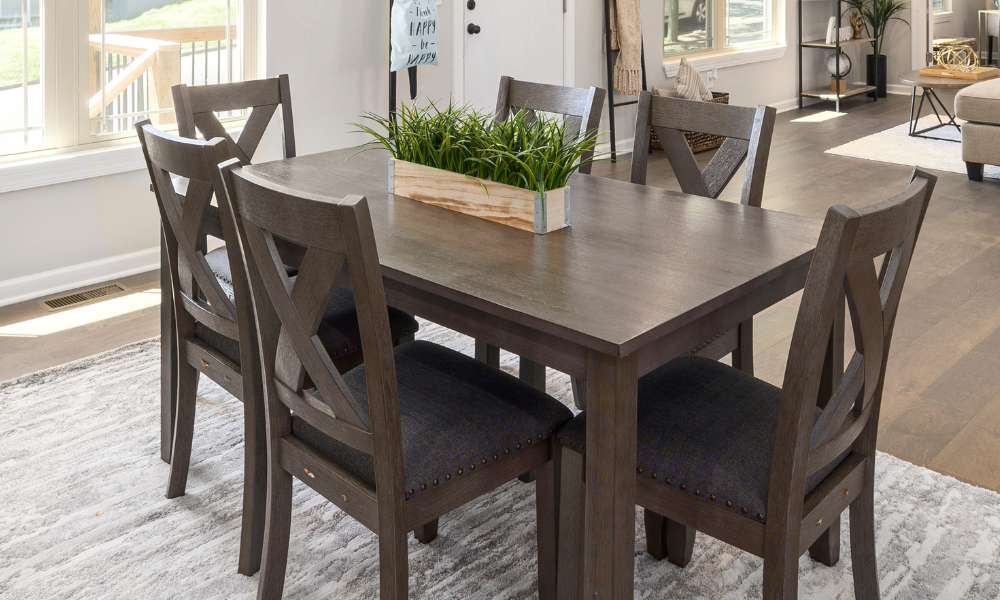Choosing the right rug size for your dining table is crucial for creating a balanced and aesthetically pleasing dining space. A well-sized rug not only anchors your dining area but also enhances the room’s overall design while providing comfort and functionality. Selecting the correct rug size ensures that chairs move smoothly and that your dining area feels cohesive. In this guide, we’ll explore how to determine the perfect rug size for your dining table, considering both style and practicality, so you can create a dining space that looks and feels just right.
1. Understanding Rug Sizing Basics

Understanding rug sizing basics is essential when choosing the perfect mat for your eating table. Standard mat sizes typically range from 5×8 to 9×12 feet, offering a variety of options to fit different dining spaces. Dining tables also come in various shapes and sizes, such as round, rectangular, and square, each requiring a specific mat size to maintain proper proportions. The key is to ensure the mat is large enough to accommodate both the table and chairs, even when the chairs are pulled out. Proper proportions between the rug and eating table not only enhance the visual appeal of your dining area but also ensure comfort and functionality during meals.
2. Measuring Your Dining Table and Space
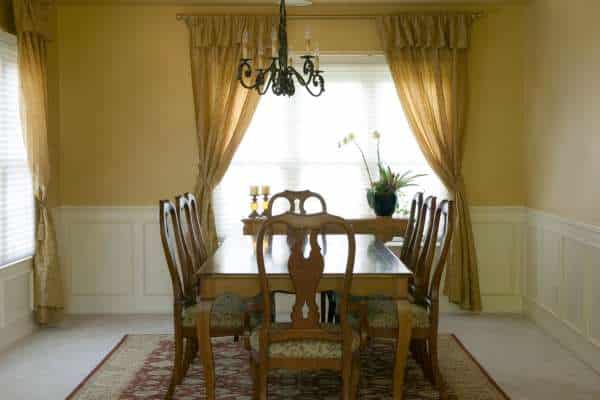
Start by measuring the length and width of your dining table to get the basic dimensions. Next, consider the surrounding space, ensuring there’s enough room for the rug to extend beyond the table. A good rule of thumb is to add at least 24-30 inches on each side to accommodate chairs, even when they are pulled out. This ensures that all chair legs remain on the mat, preventing uneven surfaces and enhancing comfort. Taking these measurements will help you choose a carpet that not only fits your dining area perfectly but also complements the overall layout of the room.
3. General Rug Sizing Guidelines
Rectangular

Rectangular tables are the most common, and the recommended mat size typically depends on the table’s dimensions. A 6×9 or 8×10 rug is usually ideal for smaller to medium-sized tables, while larger tables may require a 9×12 rug. It’s important to allow at least 24-30 inches of carpet beyond the edges of the table to ensure that all chairs remain on the carpet, even when pulled out. This helps to create a cohesive look and provides comfort during meals.
Round
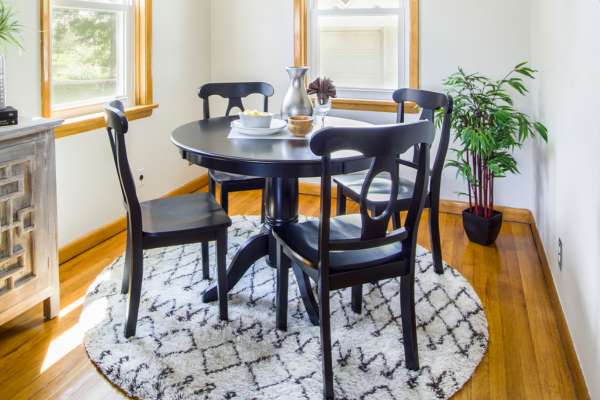
When it comes to round dining tables, the rug should be large enough to accommodate both the table and the chairs. For a standard round table, a carpet with a diameter of 8 to 9 feet is often suitable. This ensures that the chairs stay on the mat, providing stability and preventing any awkward chair leg placement.
Square
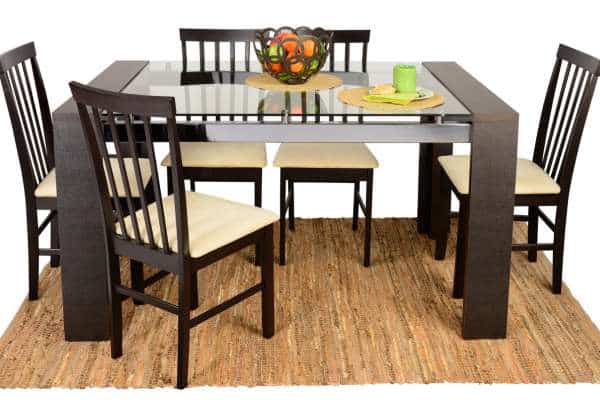
Square dining tables require a rug that maintains visual symmetry while providing enough space for chairs. A square carpet that is at least 8×8 or 9×9 feet works well for most square tables. The goal is to balance the proportions between the desk and the carpetg, ensuring that the mat complements the table’s shape and enhances the overall dining room aesthetic.
4. Factors to Consider When Choosing Rug Size
Consider the size and layout of the room—your rug should be large enough to anchor the dining area without overwhelming the space. The carpet size can significantly impact room proportions and flow; a carpet that’s too small can make the room feel disjointed, while a carpet that’s too large might dominate the space. It’s also important to balance the carpet with other furniture and décor in the dining area. Ensure the mat complements the colors and textures in the room, creating a cohesive and inviting atmosphere. By carefully considering these factors, you can select a carpet size that perfectly fits both your eating table and your space.
5. Rug Shape and Dining Table Compatibility
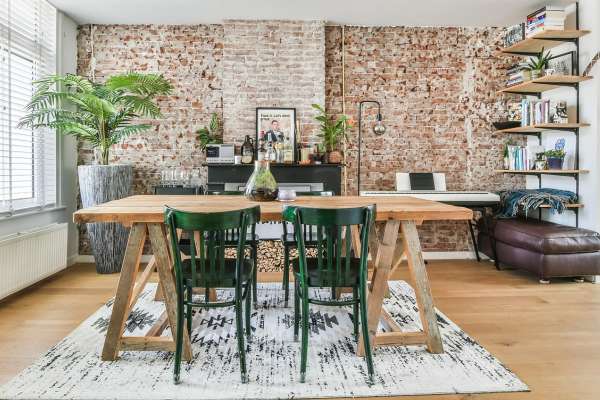
Choosing the right rug shape to match your eating table is crucial for creating a cohesive and visually appealing dining space. Ideally, the shape of your carpet should complement the shape of your eating table.
For instance, a rectangular mat works best under a rectangular table, while a round carpet perfectly complements a round desk, enhancing symmetry and balance. However, using a round carpet under a rectangular desk or vice versa can add visual interest and break up the linearity of a room, though it may be more challenging to achieve balance.
For unconventional setups, such as oval tables or expandable tables, consider a carpet that can accommodate the table’s shape while leaving enough space for chairs.
6. Practical Tips for Selecting the Right Rug Size
Make sure the rug is centered beneath the table, with equal space on all sides, to create a balanced look. A helpful tip is to use painter’s tape on the floor to visualize thecarpet size before purchasing; this allows you to see how the carpet will fit in your space and make adjustments if necessary. Additionally, consider the rug’s thickness and material—opt for a carpet that’s not too thick to allow easy movement of chairs, and choose a durable material that can withstand spills and frequent use.
7. Common Mistakes to Avoid
When choosing a rug for your eating table, a big mistake is to choose a carpet that is too small for the eating table; This can make the area feel cramped and disrupt the flow of the room. Always make sure the mat extends at least 24-30 inches beyond the edge of the desk to comfortably accommodate the chairs.
Another common oversight is neglecting to use carpet padding, which adds an extra layer of comfort and keeps the mat from slipping, increasing safety. Additionally, it is very important to consider the shape and size of your dining room when choosing a carpet. Ignoring these factors can lead to a mismatched look that’s out of harmony with the rest of the space.
Conclusion
Selecting the right rug size for your eating table is key to creating a harmonious and functional dining space. By considering factors such as the size and shape of your desk, room dimensions, and overall décor, you can choose a carpet that perfectly complements your dining area. Paying attention to details like centering the carpet, visualising the size with painter’s tape, and choosing the right material ensures that your carpet not only enhances the room’s aesthetics but also provides comfort and practicality. With the right carpet, your dining space will feel more cohesive, inviting, and well-designed.


